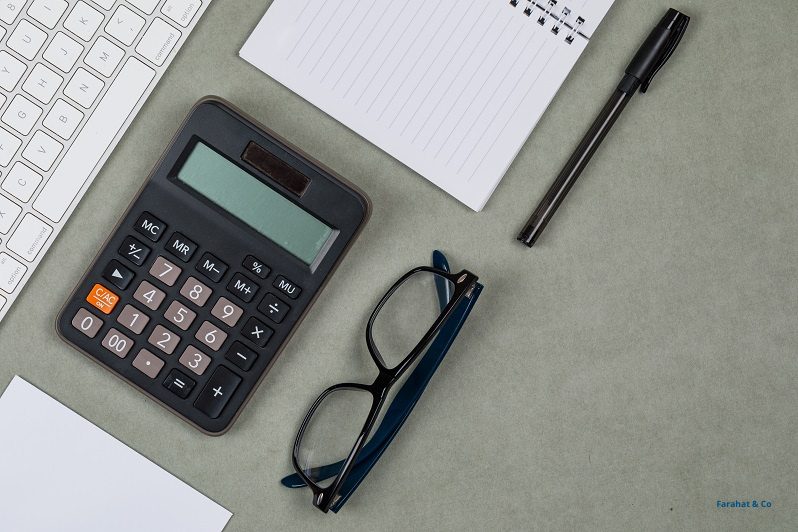Conducting accounting procedures on servicing equipment, spare parts, and other similar items is one of the biggest challenges that audit firms in Dubai face in relation to property, plant, and equipment. This topic is not covered in the IFRS standards. This guidance is very limited. Companies must rely on their own judgment and careful assessment of the situation.
Two main issues are related to spare parts or similar items.
Do we need to recognize them and make inventories of them?
How can we depreciate major parts that are part of PPE
Let's analyze them.
Spare Parts: Inventory or PPE?
It is important to determine whether spare parts are "inventories", and account for them under IAS 2 Inventory. They are considered property, plant, and equipment and so are accounted for under IAS 16. Property Plant and Equipment. The financial audit team should be careful when deciding whether to use IAS 2 and IAS 16 as the wrong choice could have serious implications for your financial statements.
Incorrect measurement of spare parts (depreciate, or not)
False presentation (non-current assets, current assets) of spare parts
It is important to keep in mind that spare parts are usually inventories.
It is much more difficult than it sounds.
According to IAS 16, paragraph 8, spare parts can be recognized if they are in compliance with the definitions of property, plant, or equipment. When assessing spare parts for your company, the audit department of the company should use the following criteria.
Read also: How Audit Firms in Dubai Can Identify An Embedded Lease Within a Contract
What are the Spare Parts?
Are spare parts used in production or kept as merchandise for resale. If so, it could indicate that they are inventories. Spare parts could be considered PPE if they are not.
Time Aspect
Are you in need of spare parts to maintain another asset for a longer period? Are you planning to use these items for a longer period?
If so, they could be PPE.
If they don't, they can be inventories.
Some spare parts are simple to classify. A backup engine that has a high purchase cost is one example of major spare parts, and it can be accounted for as part of PPE. Other items may not be as easy. There are many other issues that you should consider, in addition to the criteria mentioned above.
Materiality
You may be able to have an asset in production for more than one time, but the acquisition cost will still be minimal. Sometimes, you may have several service gear and spare parts that are similar.
This could include small tools, molds, and pallets as well as containers that are used for more than one time. These assets can be described as PPE, not inventories. It's still not practical to keep track and account for these assets.
It would be difficult to identify each screwdriver and depreciate. Internal auditors will need to evaluate the materiality and importance of spare parts of the same nature as well as service equipment, in order to make financial statements. Not only do they need to assess the relevance of each asset individually, but also the materiality of all assets in the group.
Unit of Account
According to IAS 16, a Dubai entity can decide how to apply the measurement and recognition criteria to an asset or group of assets.
Simply put: What is the PPE we have for a large number of small items?
Is it the single screwdriver at AED 5 per piece?
Or is it the 5 000 screwdrivers at AED 25 000 each (5x5 000)
Both are possible. However, the first option is not economically viable as it would be hard to keep track of 5 000 small assets.
If you have lots of spare parts or servicing equipment with low individual costs, it is reasonable to account for them as for PPE under IAS 16, if their total value is material.
Applying paragraph 9 of IAS 16 to measure these small assets and determining if they are 1 item of PPE is acceptable and practical.
Minimum Levels
Some businesses require minimum inventories to be maintained in order to maintain assets. In this instance, "inventories", which are not separate from an item PPE, are in fact a PPE.
This minimum oil level is it an item of PPE or inventories?
It is essential to be operational as it is not used in any production process. It will remain there until the plant closes. It's PPE. It's PPE.
How Audit Services Depreciate Spare Parts In PPE
We have learned how to categorize an item as PPE/inventory, and when and how to amortize major spare parts that are classified as PPE. However, the standards do not address the issue of depreciation for spare parts. We must use our judgment. IAS 16 states that depreciation should start when the asset is ready for use.
What is the problem?
Many times, spare parts are stored in the warehouse and not in use. It is therefore difficult to determine when depreciation should be charged.
Is it okay to depreciate spare parts only when they are used to replace a defective one?
Or should you depreciate spare parts after they arrive in the warehouse regardless of how often they are used? What is the useful life of such spare parts?
It all depends on the nature and purpose of the spare part.
To ensure uninterrupted operation of machinery, keep the spare part. You should begin the depreciation process immediately. This is because a crucial spare part can be used immediately if the original part stops working.
For assistance, get in touch with Your Audit Firm in Dubai.
We can help you with spare parts for accounting and auditing, or directions on IFRS.
Read also: How Audit Services in Dubai Account for Government Grants Using IAS 20


